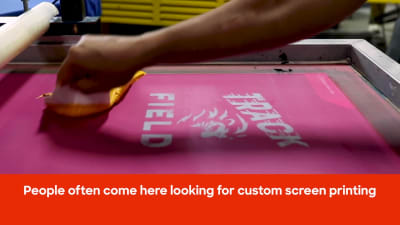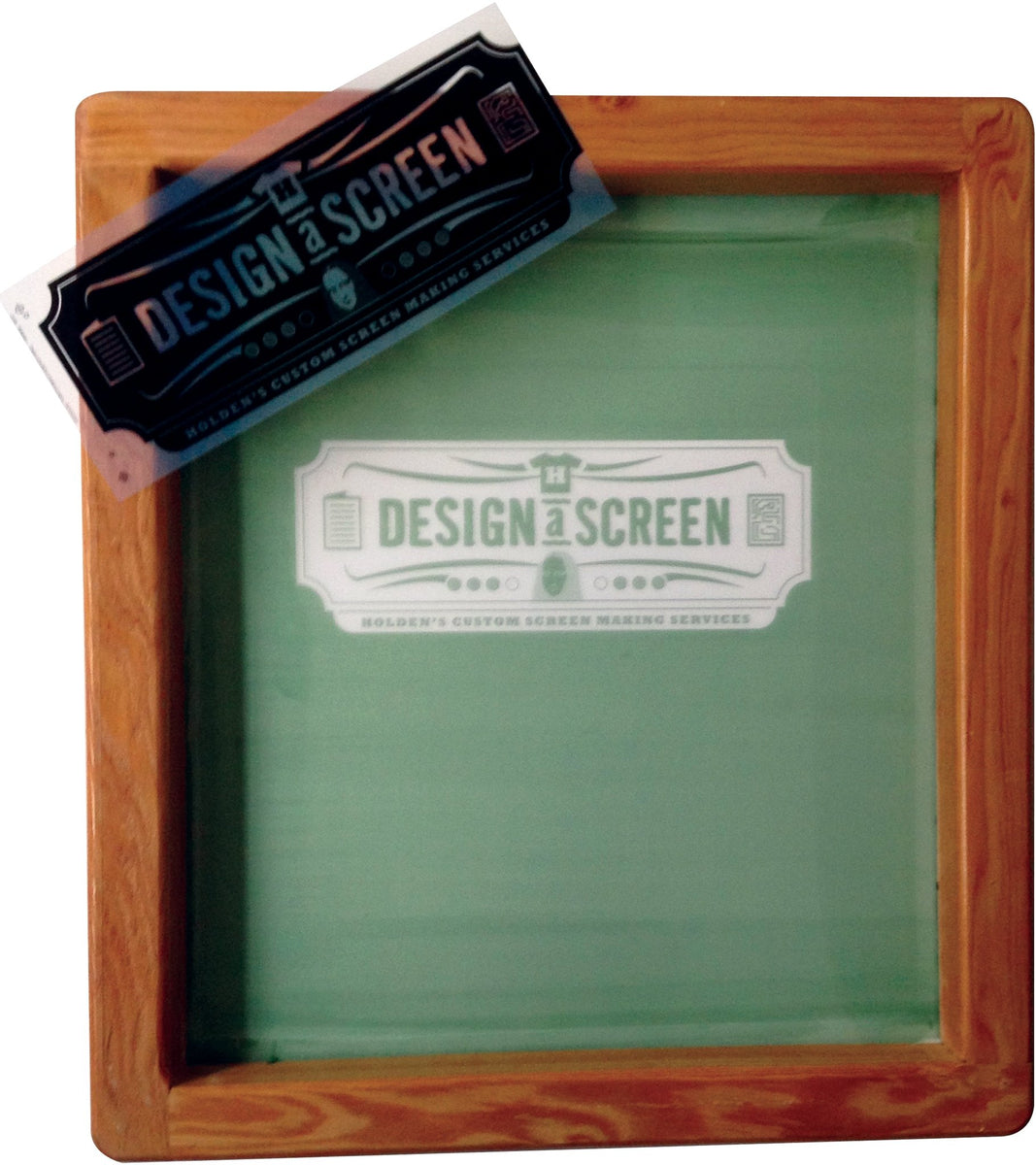Silk Screen Printing for Bold and Lasting Designs
Silk Screen Printing for Bold and Lasting Designs
Blog Article
Screen Printing Uncovered: Whatever You Need to Know About Tee Shirt and Garment Printing Techniques
Display printing is an interesting technique that integrates art with method, offering endless opportunities for creativity. Ready to check out the essential elements that make display publishing an art kind?
The Basics of Screen Printing: Just How It Works
When you plunge into display printing, you'll discover it's both an art and a science. At its core, display printing entails creating a stencil, or screen, that allows ink to pass via only in certain locations.
Position the display over the fabric, then use a squeegee to press ink with the display onto the garment. Each step is crucial, and understanding them will certainly elevate your screen printing skills, changing simple garments right into distinct, meaningful items.
Kinds Of Screen Printing Methods
As soon as you grasp the basics of screen printing, it's time to check out the numerous methods that can elevate your designs. One popular method is conventional screen printing, where ink is pushed with a stenciled screen.
If you're aiming for fine details, take into consideration discharge printing. This method gets rid of dye from the textile, leaving a soft, vintage look. One more alternative is plastisol printing, recognized for its toughness and vivid shades, making it a favored for many brand names. Experiment with halftone printing to create slope impacts and intricate designs. Each strategy has its special appeal, so don't hesitate to attempt them out to find what suits your style best!
Essential Tools for Display Printing
To accomplish spectacular results in display printing, having the best equipment is basic. You'll require a durable display printing framework, which holds the mesh that moves your layout onto the garment. Next, buy top quality mops; these are crucial for using ink uniformly across the screen. You'll also require a great exposure unit to create your screens, as well as a washout cubicle for cleaning them after use. A reliable heat source, like a conveyor clothes dryer or heat press, is important for healing your prints to guarantee durability. Don't fail to remember a proper work space, equipped with tables and storage space for your materials. Ultimately, protective equipment, such as handwear covers and masks, will certainly maintain you safe from chemicals and inks. With the right tools, you'll be well on your means to producing professional-quality prints.
Choosing the Right Inks and Materials
When selecting inks and products for display printing, you require to consider the sort of ink that works best for your job. Believe regarding material compatibility to ensure your designs look terrific and last long. Check out green ink options to make your printing procedure extra lasting.
Sorts Of Display Inks
Choosing the ideal screen ink is important for attaining vivid, long lasting prints that meet your task's demands. There are several types of display inks to take a look at. Specialty inks, such as metallic or glow-in-the-dark, can include one-of-a-kind impacts to your styles.

Textile Compatibility Factors To Consider
Understanding textile compatibility is important for achieving top quality display prints, particularly because different products respond distinctively to numerous inks. Always examine your inks on sample textile to guarantee they stick correctly and keep color honesty. Additionally, maintain in mind that material weight and texture can affect the last result, so picking the right ink and product combination is essential for your job's success.
Eco-Friendly Ink Options
Eco-friendly inks are ending up being a preferred option for screen printers that want to reduce their environmental influence while maintaining top quality. When choosing inks, take into consideration water-based inks, which are much less damaging and much easier to cleanse up contrasted to typical solvents.
In addition, seek inks made from renewable energies, such as soy or vegetable-based choices. By selecting the ideal inks and products, you'll not just develop stunning designs yet also add to a much more sustainable printing process. Make the switch, and your prints will reflect your dedication to the setting!
Preparing Your Style for Screen Printing

File Format Demands
To ensure your style looks vibrant and sharp on material, you'll need to pay close focus to file layout requirements for screen printing. Beginning with vector documents like AI or EPS, as they can explanation be scaled without losing top quality. If you use raster pictures, select high-resolution data, such as TIFF or PNG, preferably at 300 DPI. Stay clear of using JPEGs, as they can lose quality when resized. Make certain your layout has a transparent history to prevent unwanted white edges on your prints. Lastly, keep shade settings in mind; CMYK is conventional for screen printing, so transform your RGB designs as necessary. By following these guidelines, you'll set your artwork up for an effective print.
Color Separation Strategies
Color separation is a crucial step in preparing your style for screen printing, and grasping it can considerably enhance your print top quality. You'll require to damage your style into individual shades, as each shade needs a separate screen throughout printing. Begin by recognizing all the shades in your style and produce layers for each one. You can use software application like Adobe Photoshop or Illustrator to separate and different shades efficiently. Be specific to conserve each layer as a separate file, commonly in a format like TIFF or PSD. This accuracy not just assures accurate shade depiction yet additionally streamlines the printing process. By paying interest to color separation, you'll achieve specialist and lively outcomes in your screen-printed garments.
Resolution and Dimension
Accomplishing the most effective cause display printing starts with ensuring your layout has the ideal resolution and dimension. Preferably, your artwork must go to least 300 DPI (dots per inch) for sharp, clear prints. If you use reduced resolution, your final item might look amateur and pixelated.
When it concerns size, consider the measurements of your print area. Design your artwork to match the last print size, preferably producing it in the actual measurements you'll be publishing. By doing this, you'll stay clear of any unforeseen scaling concerns.
Constantly check your design in both vector and raster styles. Vector graphics can be scaled without shedding quality, making them excellent for screen printing. Preparing appropriately will guarantee your style looks fantastic on every garment!
Step-by-Step Screen Printing Refine
Display printing is a vibrant process that enables you to create dynamic designs on various surfaces. To obtain begun, you'll require a screen, emulsion, and your chosen ink.
Put ink onto the display and make use of a squeegee to press the ink with the pattern onto the material. Lift the display very carefully and let the print dry. You have actually effectively display printed your design.
Tips for Effective Screen Printing Projects
While you're diving right into your screen printing tasks, keep in mind that preparation is essential to success. Begin by gathering all your products-- inks, garments, squeegees, and displays. A clean work space aids prevent unwanted mistakes, so clean before you start.
Next, confirm your art work is high-resolution and effectively sized for your garment. Evaluate your display for proper direct exposure and tidy it completely to avoid spots. When blending your inks, comply with the manufacturer's guidelines to attain the best uniformity.
Throughout printing, apply even stress with your squeegee for consistent results. Do not hurry; take your time to verify each print satisfies your standards. After printing, let your garments completely dry completely before handling or packaging them.
Finally, constantly keep an example of your help future referral. By doing this, you can evaluate useful site your progress and boost your methods with time. Happy printing!

Regularly Asked Inquiries
For how long Does It Take to Set up a Screen Printing Work?
Establishing a display printing task typically takes about 30 mins to an hour. You'll prepare the screens, mix inks, and adjust the press. The time differs based upon complexity and experience, so stay organized!
Can I Publish on Different Textile Types Using the Same Method?
Yes, you can print on different textile kinds utilizing the same strategy, yet you'll need to adjust your why not check here inks and settings. Some materials take in ink in different ways, so experimenting assurances the most effective results for every material.
What Are Typical Mistakes to Avoid in Display Printing?
When screen printing, stay clear of typical errors like using the incorrect ink, disregarding correct exposure times, or missing pre-press checks. Constantly evaluate your setup and keep clean displays to ensure high quality results each time.
Exactly How Can I Appropriately Tidy and Preserve My Screen Printing Tools?
To appropriately clean and keep your display printing tools, you must regularly wash screens with ideal solvents, examine squeegees for wear, and ensure all tools are kept dust-free and dry. Uniformity prevents expensive repair work and boosts efficiency.
Is Screen Printing Eco-friendly Compared to Other Approaches?
Screen printing can be much more eco-friendly than various other approaches, especially if you utilize water-based inks and eco-conscious materials. By choosing lasting products and practices, you reduce waste and reduce your influence on the world.
Display Printing Uncovered: Everything You Need to Know Concerning Tee and Garment Printing Techniques
At its core, screen printing includes producing a pattern, or display, that allows ink to pass with just in specific locations. Position the display over the material, after that use a squeegee to press ink through the display onto the garment. One popular approach is conventional display printing, where ink is pushed with a stenciled display.When picking inks and materials for display printing, you need to take right into account the type of ink that works finest for your task.
Report this page